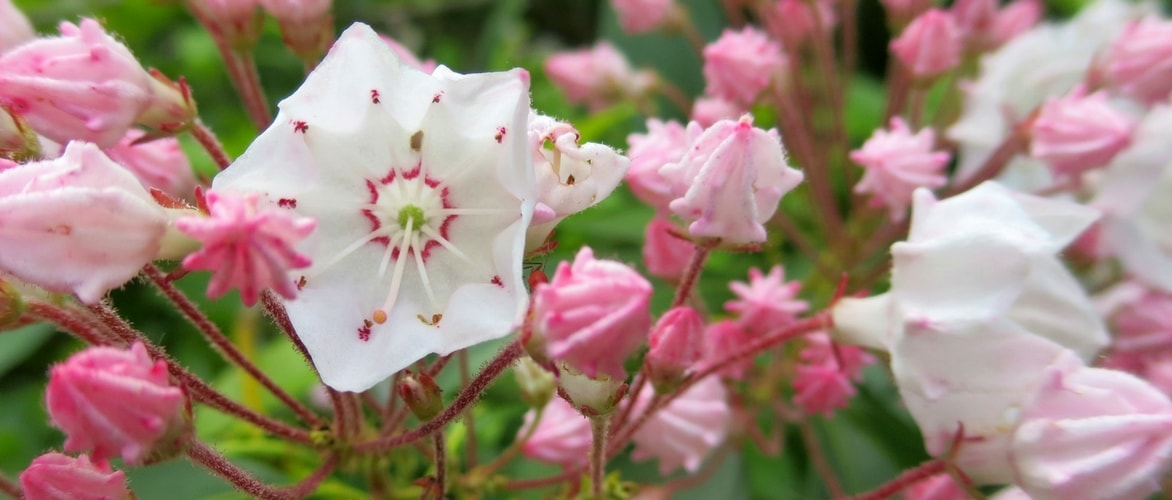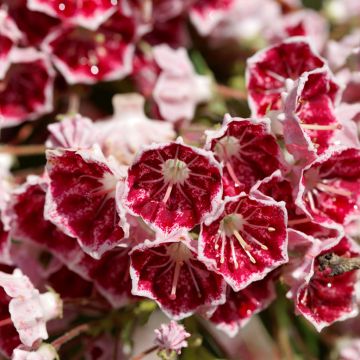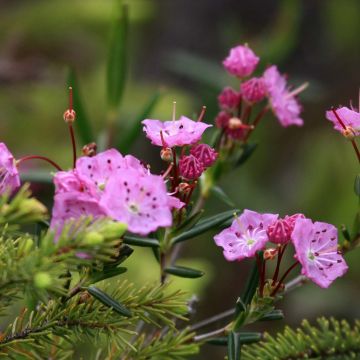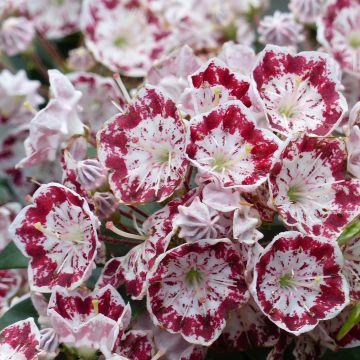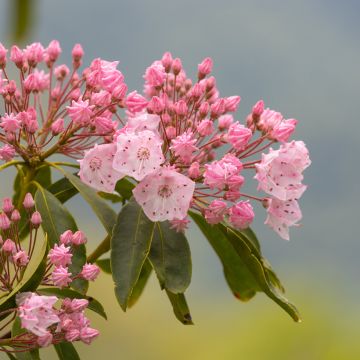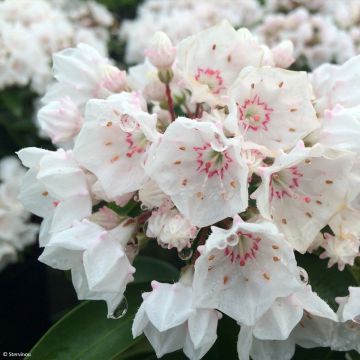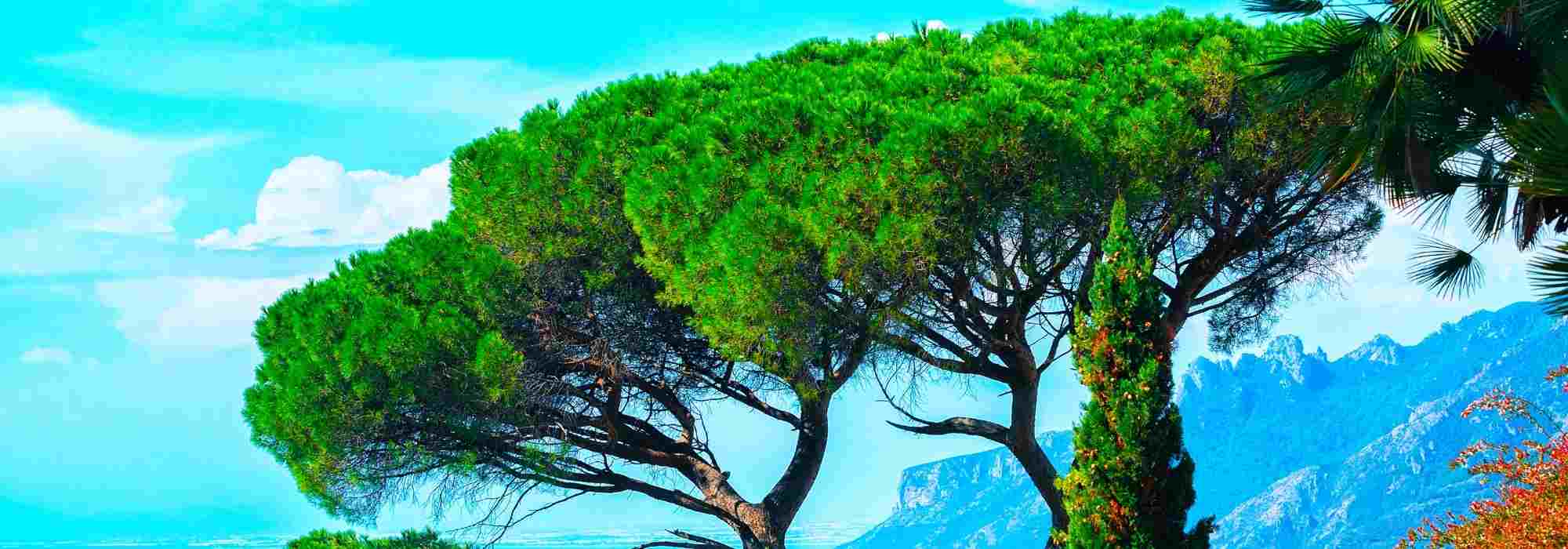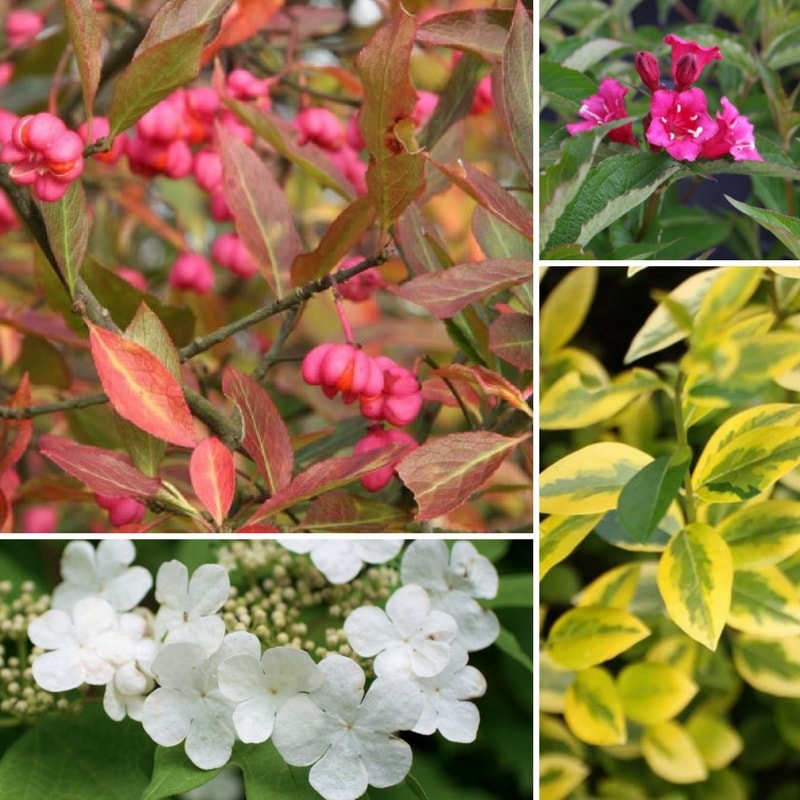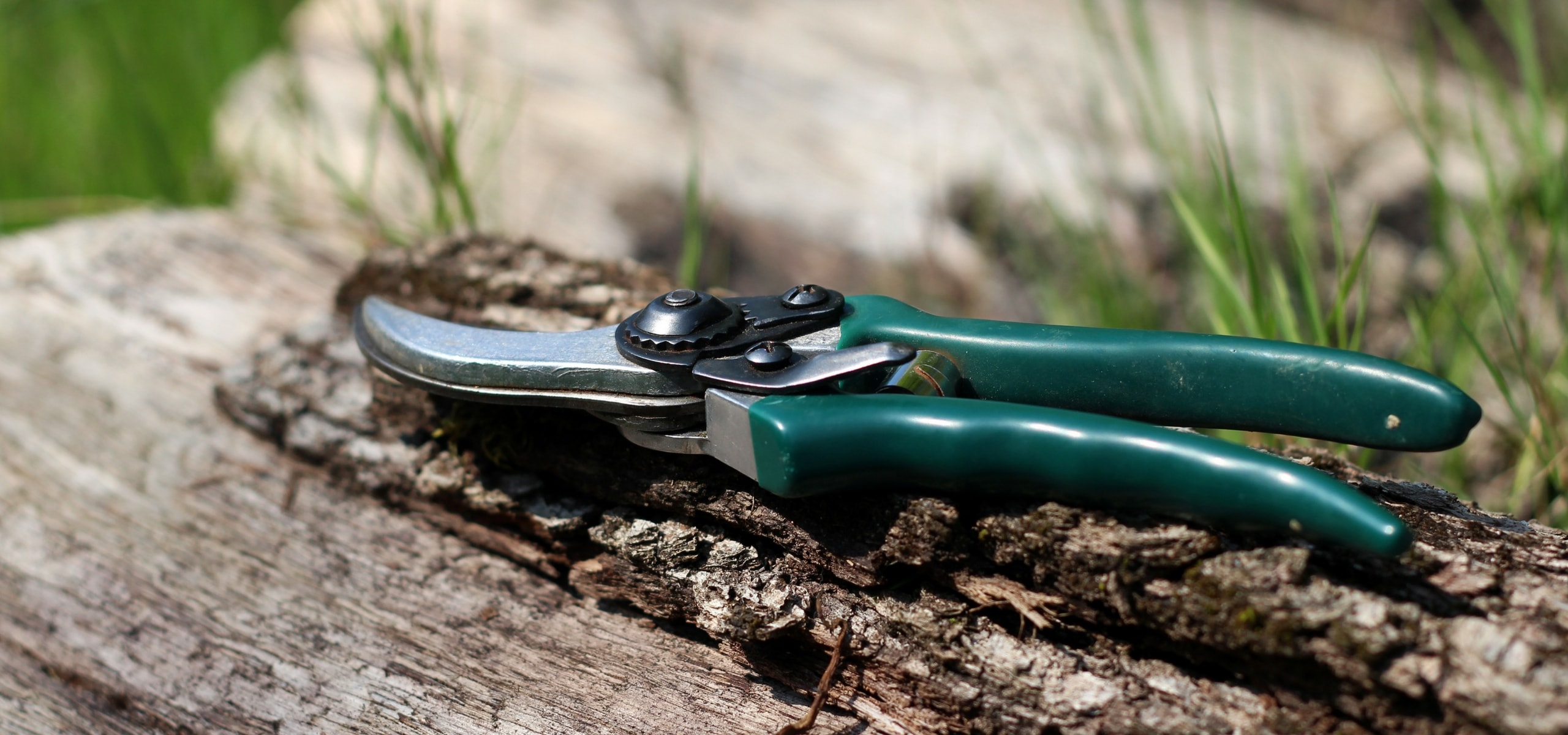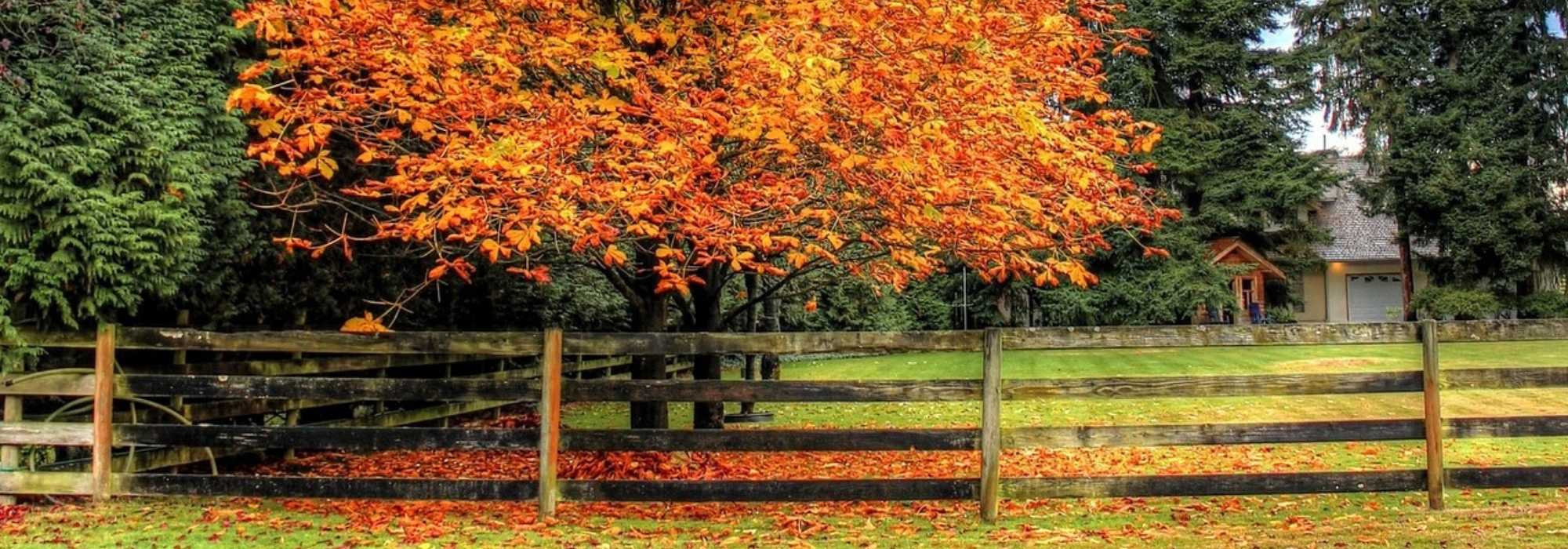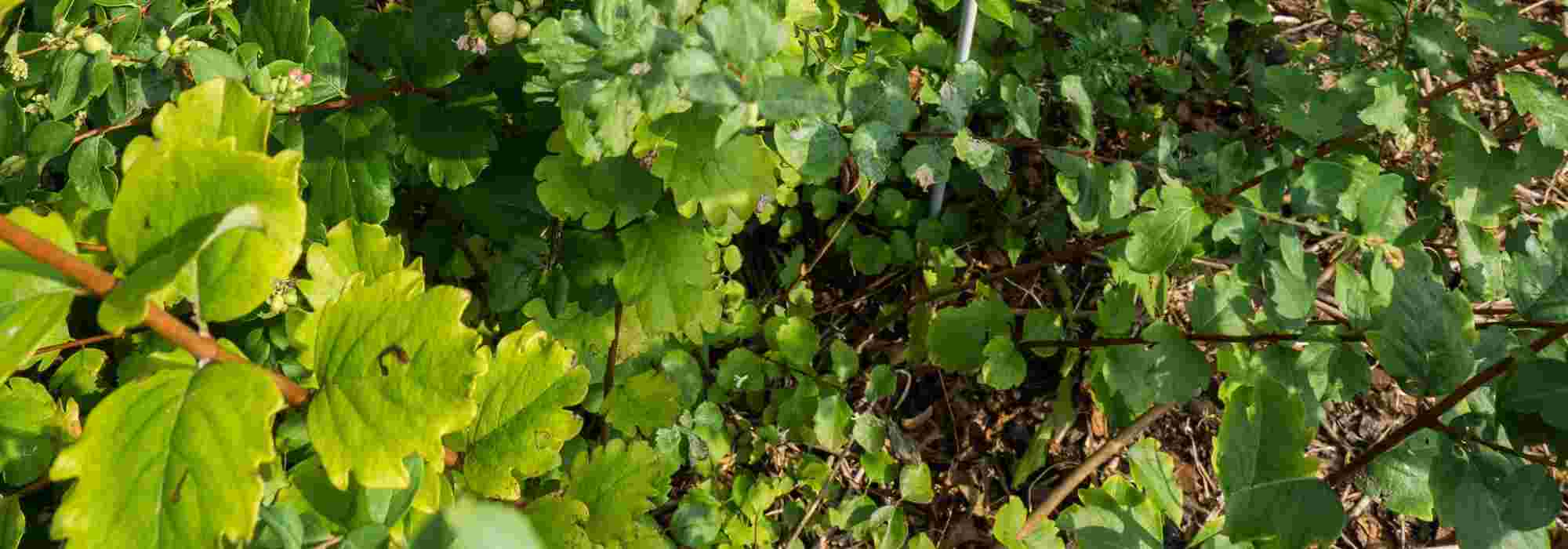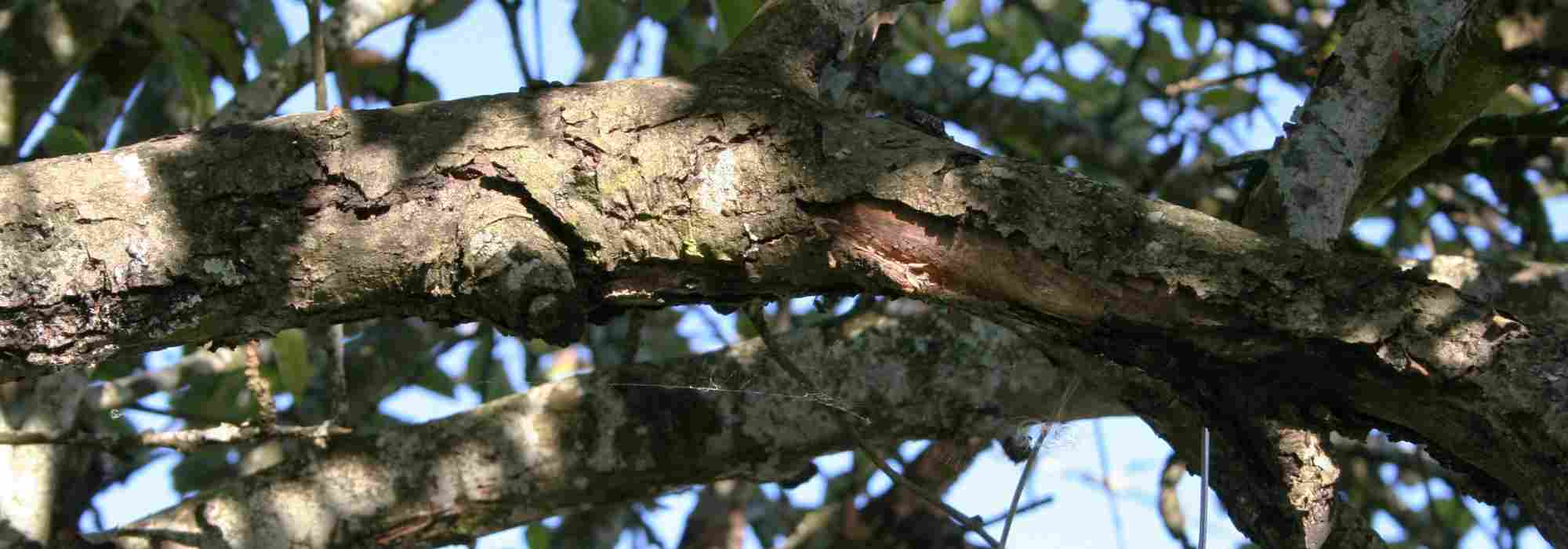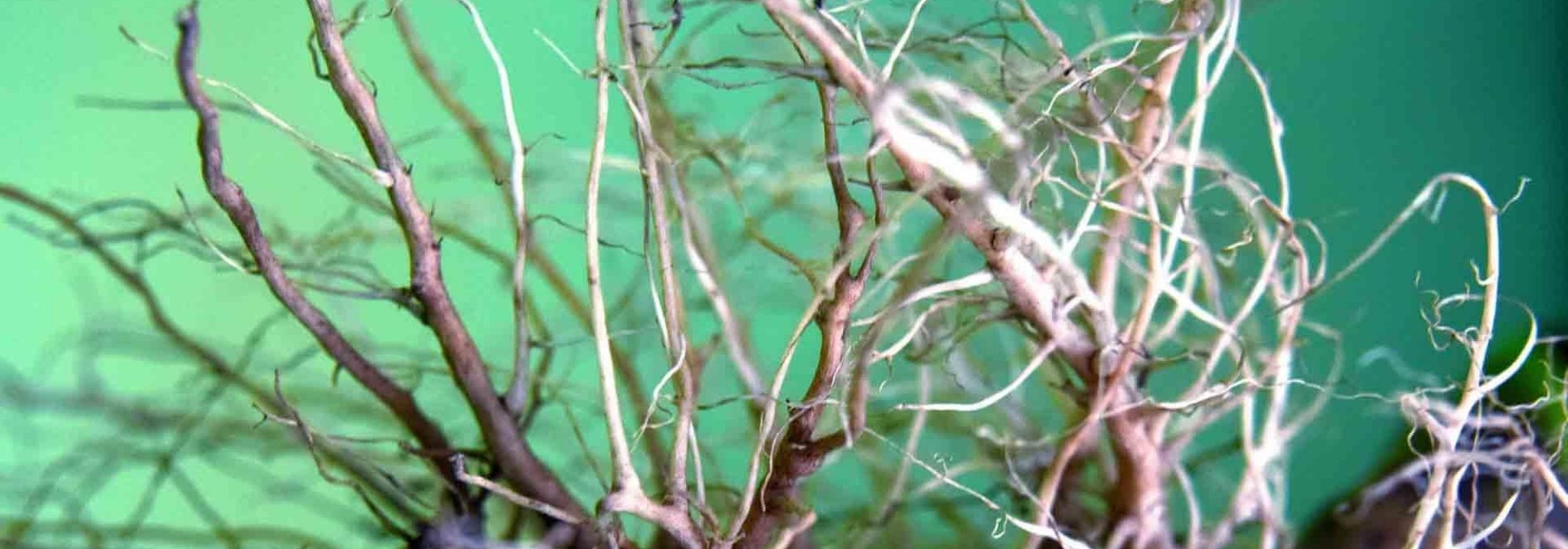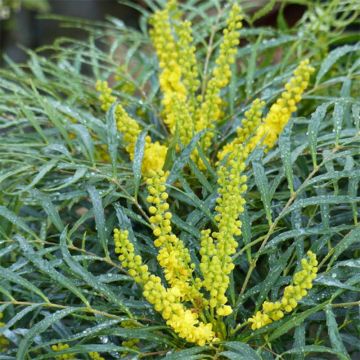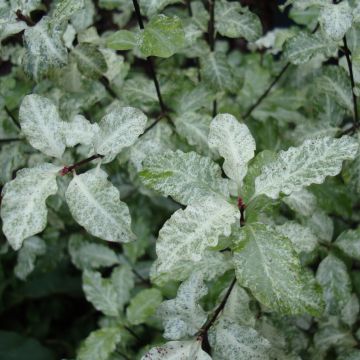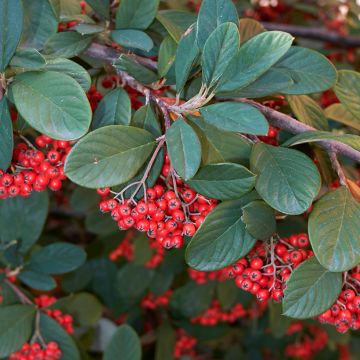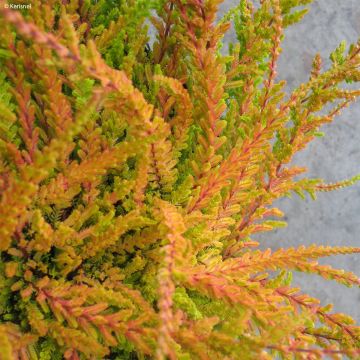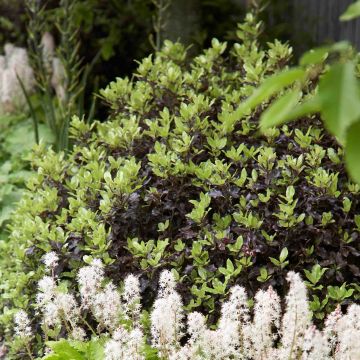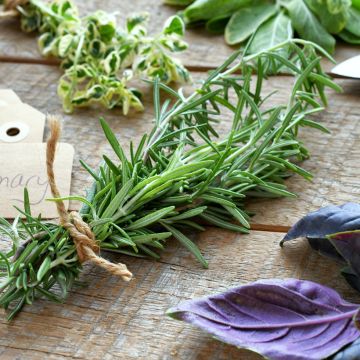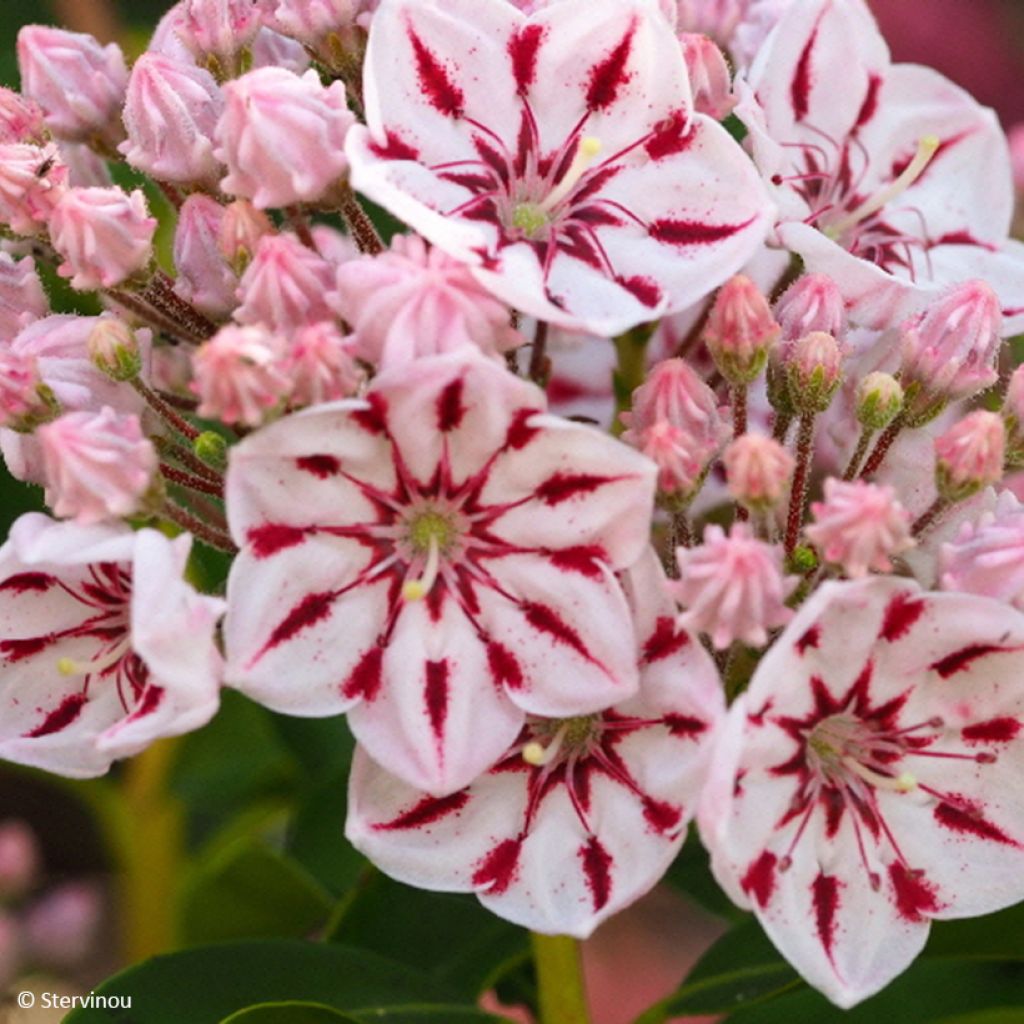

Kalmia latifolia Windmill - Mountain Laurel
Kalmia latifolia Windmill - Mountain Laurel
Kalmia latifolia Windmill
Mountain Laurel, Spoonwood, Calico Bush
Superb!
SHINRA TENSEI, 14/10/2025
Special offer!
Receive a €20 voucher for any order over €90 (excluding delivery costs, credit notes, and plastic-free options)!
1- Add your favorite plants to your cart.
2- Once you have reached €90, confirm your order (you can even choose the delivery date!).
3- As soon as your order is shipped, you will receive an email containing your voucher code, valid for 3 months (90 days).
Your voucher is unique and can only be used once, for any order with a minimum value of €20, excluding delivery costs.
Can be combined with other current offers, non-divisible and non-refundable.
Home or relay delivery (depending on size and destination)
Schedule delivery date,
and select date in basket
This plant carries a 24 months recovery warranty
More information
We guarantee the quality of our plants for a full growing cycle, and will replace at our expense any plant that fails to recover under normal climatic and planting conditions.

Does this plant fit my garden?
Set up your Plantfit profile →
Description
The Kalmia latifolia 'Windmill' is a evergreen bush of heather soil that offers one of the most beautiful spring flowering displays. This plant with moderate growth is adorned with beautiful dark green evergreen foliage, ornamental throughout the seasons. Its dark vegetation serves as a beautiful backdrop to highlight the light flowering. The floral buds of a soft pink color open into corollas in the shape of wide cups. Their pinkish white color is enhanced by a highly decorative red star-like ornamentation. This bush cannot tolerate limestone or drought and requires acidic, moist, and well-drained soil, in a semi-shaded exposure. If the soil is not suitable, its slow growth and moderate size allow it to be grown in a container.
The Wide-leaved Kalmia, also known as the mountain laurel or American laurel, is a member of the Ericaceae family. Rich in about a hundred genera, this botanical family hosts, in addition to the vast group of Rhododendrons, other lesser-known ornamental plants (Enkianthus, Oxydendron...), and even small fruit trees (Strawberry tree, Blueberry bush...). The genus Kalmia comprises about twenty species native to North America. Kalmia latifolia thus grows wild in the shade of Oak and Mountain Pine forests in eastern Canada (Quebec and New Brunswick) and the eastern United States, down to Florida. In its natural habitat, it can grow into a small tree of 12 m high, but in our parks and gardens, it generally reaches a maximum of 2 to 3 m.
'Windmill' is a horticultural variety obtained by Dr. Karl-Heinz Hübbers, a German breeder, using the pollen of 'Tofka', a beautiful compact variety with pastel flowers speckled with dark red, to pollinate the 'Hania' variety, an even more compact variety with pink flowers. The crossbreeding done in 2010 led to its market release in 2021, after the variety was named in 2019 by Tadeusz Kusibab, a Polish director of an in-vitro laboratory. 'Windmill' is like its parents, a slow-growing bush with a compact habit, reaching a height of 0.90 to 1 m and a width of 0.80 m after 10 years of cultivation. Mature specimens will not exceed 1.50 m in all directions, allowing its use in small gardens, and even in decorative pots or containers. The bush has an upright, irregular silhouette, composed of slightly stiff erect branches. The pleasantly dark green leaves have an elliptical lanceolate shape, measuring 8 to 10 cm long by about 4 cm wide. Evergreen, their surface is smooth and glossy, with occasionally undulating edges, and a somewhat tough texture. This dark background is ideal for enhancing the lighter flowering. Well before the flowering, the floral buds are already very decorative. With their candy pink color and curious ribbed shape, they could be mistaken for sweets, but beware, like all other parts of the plant, they are toxic if ingested! In May-June, they gradually bloom at their own pace, providing a truly exquisite long-lasting flowering. The corymbs, measuring 12 cm long or more, consist of dozens of flowers at various stages of maturity. The corolla measures up to 3.5 cm in diameter and takes on a spreading cup shape. It is made up of petals fused along their length (referred to as gamopetalous flowers) that give it all its character and a slightly romantic charm. Red streaks extend from the base to the periphery, widening from the middle and forming a particularly ornamental intricate star. One can easily discern the shape of windmill blades that give this cultivar its name 'Windmill'. The display is magnificent in the second half of spring and attracts all eyes in the garden.
The 'Windmill' mountain laurel is a bush, indeed quite demanding in terms of soil, humidity, and shade, but its flowering fully justifies finding a spot for it in the garden. It can be grown in a container with acidic substrate if your soil is limestone and will not fear frost, as it is very hardy. In the ground, you can easily integrate it into a bed of heather soil plants, alongside Rhododendrons and Azaleas, allowing you to create a vibrant and colourful scene for several weeks by selecting staggered flowering varieties. In the back of the bed, a beautiful Magnolia grandiflora will help you create a shaded atmosphere to meet the needs of its semi-shade plants.
Beware of children and pets, as all parts of the plant are toxic (leaves, buds, and flowers).
Plant habit
Flowering
Foliage
Safety measures
Botanical data
Kalmia
latifolia
Windmill
Ericaceae
Mountain Laurel, Spoonwood, Calico Bush
Cultivar or hybrid
ingestion
Cette plante est toxique si elle est ingérée volontairement ou involontairement.
Ne la plantez pas là où de jeunes enfants peuvent évoluer, et lavez-vous les mains après l'avoir manipulée.
Pensez à conserver l'étiquette de la plante, à la photographier ou à noter son nom, afin de faciliter le travail des professionnels de santé.
Davantage d'informations sur https://plantes-risque.info
Other Kalmias
View all →Planting and care
Native to the mountains of the eastern North America, the Kalmia latifolia is extremely hardy and can withstand very low temperatures, down to -20°C. It should be planted in a semi-shaded position, in humus-bearing and fertile, acidic, fresh (even moist) but well-drained soil. For planting, avoid periods of frost or extreme heat, but rather favour those of spring or autumn rains, which will facilitate its establishment. Prepare a fairly wide and deep planting hole (40 cm by 40 cm) for your Kalmia to settle in permanently. Regular watering (with non-calcareous water if possible) during the first weeks after planting is necessary to keep the soil moist and fresh. Mulching at the base can be beneficial to protect the fine and superficial roots. Every spring, loosen the soil around the base and topdress with a mix of compost, heather soil, and pine bark. If the soil is calcareous, it is advisable to avoid planting this acid-loving bush, as it would eventually deteriorate in the long run. However, you can try growing it by replacing the soil in your garden (over 60 to 80 cm all around) with a mix of heather soil, leaf compost, and turf. In this case, apply dissolved iron chelate in the irrigation water every three months, from spring to autumn.
The Mountain Laurel can tolerate a sunny exposure, but fears scorching situations and drought. It must be placed in such a way that it is shaded during the hottest hours of the day, and mulching the base is essential to preserve soil freshness. During the summer period and especially in case of drought, regular watering (preferably with rainwater) will be necessary. Summer watering is particularly important as floral buds form for the following spring. Loving coolness and high humidity, the mountain laurel will thrive in an oceanic or rainy climate. It can also be grown in a large container on the terrace or balcony. The risks of soil drying out are higher when grown in a pot, so a large container, mulch to retain freshness, and increased monitoring of watering will be essential. Apart from removing faded flowers, pruning of Kalmia latifolia is hardly necessary. In fact, it could hinder the following year's flowering, as floral buds form at the ends of the branches. However, it is possible to remove dead wood and perform a very light refreshment to maintain a balanced habit of the Kalmia.
Planting period
Intended location
Care
Planting & care advice
-
, onOrder confirmed
Reply from on Promesse de fleurs
Similar products
Haven't found what you were looking for?
Hardiness is the lowest winter temperature a plant can endure without suffering serious damage or even dying. However, hardiness is affected by location (a sheltered area, such as a patio), protection (winter cover) and soil type (hardiness is improved by well-drained soil).

Photo Sharing Terms & Conditions
In order to encourage gardeners to interact and share their experiences, Promesse de fleurs offers various media enabling content to be uploaded onto its Site - in particular via the ‘Photo sharing’ module.
The User agrees to refrain from:
- Posting any content that is illegal, prejudicial, insulting, racist, inciteful to hatred, revisionist, contrary to public decency, that infringes on privacy or on the privacy rights of third parties, in particular the publicity rights of persons and goods, intellectual property rights, or the right to privacy.
- Submitting content on behalf of a third party;
- Impersonate the identity of a third party and/or publish any personal information about a third party;
In general, the User undertakes to refrain from any unethical behaviour.
All Content (in particular text, comments, files, images, photos, videos, creative works, etc.), which may be subject to property or intellectual property rights, image or other private rights, shall remain the property of the User, subject to the limited rights granted by the terms of the licence granted by Promesse de fleurs as stated below. Users are at liberty to publish or not to publish such Content on the Site, notably via the ‘Photo Sharing’ facility, and accept that this Content shall be made public and freely accessible, notably on the Internet.
Users further acknowledge, undertake to have ,and guarantee that they hold all necessary rights and permissions to publish such material on the Site, in particular with regard to the legislation in force pertaining to any privacy, property, intellectual property, image, or contractual rights, or rights of any other nature. By publishing such Content on the Site, Users acknowledge accepting full liability as publishers of the Content within the meaning of the law, and grant Promesse de fleurs, free of charge, an inclusive, worldwide licence for the said Content for the entire duration of its publication, including all reproduction, representation, up/downloading, displaying, performing, transmission, and storage rights.
Users also grant permission for their name to be linked to the Content and accept that this link may not always be made available.
By engaging in posting material, Users consent to their Content becoming automatically accessible on the Internet, in particular on other sites and/or blogs and/or web pages of the Promesse de fleurs site, including in particular social pages and the Promesse de fleurs catalogue.
Users may secure the removal of entrusted content free of charge by issuing a simple request via our contact form.
The flowering period indicated on our website applies to countries and regions located in USDA zone 8 (France, the United Kingdom, Ireland, the Netherlands, etc.)
It will vary according to where you live:
- In zones 9 to 10 (Italy, Spain, Greece, etc.), flowering will occur about 2 to 4 weeks earlier.
- In zones 6 to 7 (Germany, Poland, Slovenia, and lower mountainous regions), flowering will be delayed by 2 to 3 weeks.
- In zone 5 (Central Europe, Scandinavia), blooming will be delayed by 3 to 5 weeks.
In temperate climates, pruning of spring-flowering shrubs (forsythia, spireas, etc.) should be done just after flowering.
Pruning of summer-flowering shrubs (Indian Lilac, Perovskia, etc.) can be done in winter or spring.
In cold regions as well as with frost-sensitive plants, avoid pruning too early when severe frosts may still occur.
The planting period indicated on our website applies to countries and regions located in USDA zone 8 (France, United Kingdom, Ireland, Netherlands).
It will vary according to where you live:
- In Mediterranean zones (Marseille, Madrid, Milan, etc.), autumn and winter are the best planting periods.
- In continental zones (Strasbourg, Munich, Vienna, etc.), delay planting by 2 to 3 weeks in spring and bring it forward by 2 to 4 weeks in autumn.
- In mountainous regions (the Alps, Pyrenees, Carpathians, etc.), it is best to plant in late spring (May-June) or late summer (August-September).
The harvesting period indicated on our website applies to countries and regions in USDA zone 8 (France, England, Ireland, the Netherlands).
In colder areas (Scandinavia, Poland, Austria...) fruit and vegetable harvests are likely to be delayed by 3-4 weeks.
In warmer areas (Italy, Spain, Greece, etc.), harvesting will probably take place earlier, depending on weather conditions.
The sowing periods indicated on our website apply to countries and regions within USDA Zone 8 (France, UK, Ireland, Netherlands).
In colder areas (Scandinavia, Poland, Austria...), delay any outdoor sowing by 3-4 weeks, or sow under glass.
In warmer climes (Italy, Spain, Greece, etc.), bring outdoor sowing forward by a few weeks.






























